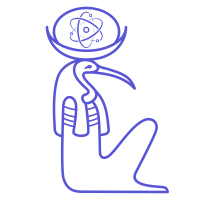Science vocabulary
| Cell | Basic building blocks of organisms |
| Cell membrane | External boundary of a cell that separates the cell from its external environment |
| Cell wall | Thick layer surrounding the cell membrane of a plant cell |
| Chloroplasts | Organelles in green plant cells that contain the pigment chlorophyll which are responsible in absorbing light energy to make food through photosynthesis |
| Cytoplasm | Contents of the cell, excluding the nucleus, that is bound by the cell membrane |
| Nucleus | Structure in the cytoplasm that controls the functions of the cell. It contains genetic material that is transmitted from generation to generation. This genetic material determines the characteristics of the organism. |
| Vacuole | Fluid-filled structure in the cytoplasm that is surrounded by a membrane |
| Tissue | A group of specialised cells performing a similar function |
| Organelle | A membrane-bound compartment in the cytoplasm that has a specialised function |
The differences between a typical plant cell and a typical animal cell.
| Feature | Animal | Plant |
| Shape | ||
| Cell wall | Absent | Present outside the cell |
| Nucleus | Often centrally located | Located towards the side |
| Chloroplasts | None | Many |
| Vacuoles | Many small ones within the cytoplasm (often called vesicles) | One large vacuole in the central position |

Common misconception
- Misconception: only plant cell has a cell wall. Actual fact: Bacteria and Chlamydomonas (a unicellular organism) have a cell wall. However, unlike plant cells, which have a cellulose cell wall, bacteria and Chlamydomonas have a cell wall that is not made of cellulose.
- Misconception: only plant cells have chloroplasts. Actual fact: The Euglena is a unicellular organism that is not a plant but contains chloroplasts. Thus, it produces its own food but also consumes food from its environment.
Plant leaf
- Beside the leaf tissue, plants also contain epidermal and vascular tissues. In epidermal tissue, cells are closely arranged to form a surface covering. In land plants, the outer surface of the epidermis is covered with a waxy layer called cuticle that helps to reduce water loss from the leaves. Some epidermal cells may be specialised in pairs to form guard cells that control the size of the stoma (open = guard cells become turgid; close = guard cells become flaccid) which controls the flow of carbon dioxide and oxygen. Inevitably, water is loss when stomata are open for release of oxygen. [Hint: read up on transpiration]. The vascular tissues are made up of xylem and phloem that responsible for transportation of water, nutrients and other dissolved substances within the plant.
Science bites
- Without a nucleus, the lifespan of red blood cells in blood plasma is about 120 days.
- Red blood cells contain haemoglobin which gives the cells their red colour and oxygen-carrying capability.
